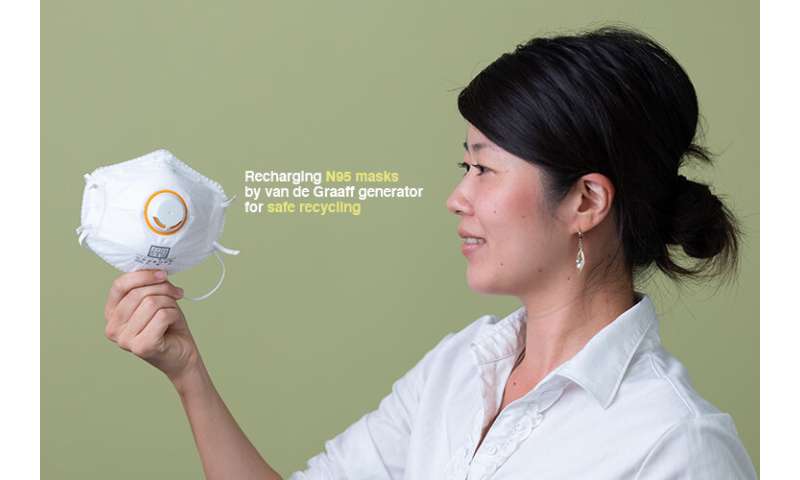
A researcher from the Institute of Industrial Science at the University of Tokyo has demonstrated a novel method for recharging sterilized N95 masks so that they can be reused. By exposing the masks to 100 kilovolts for three minutes after sterilization in hot water or an autoclave, they regained their static charge. This work can be rapidly applied to meet the huge demand for protective equipment that can prevent the spread of the COVID virus.
During the current COVID pandemic, N95 masks have been indispensable for keeping health care workers and first responders safe. The name comes from the fact that these masks can filter more than 95% of airborne particles, even though they have pore sizes 10 times larger than the small aerosol particles that can carry the virus. The trick is that the N95 masks are made of electrospun polypropylene fibers, which retain a static electric charge that can attract and trap the charged aerosols. However, this static charge cannot withstand normal sterilization procedures, such as washing in hot water or autoclaving. Even the moisture in the wearer’s breath can degrade the effectiveness of the electric attraction. For this reason, the masks are often discarded after a single use, which greatly increases the gap between the number of N95 masks needed and the number available.
Now, a researcher at the University of Tokyo has shown that sterilized masks can be returned to use after being recharged using a van de Graaff generator. These devices, familiar to many science museum visitors, use the friction from a spinning belt to generate very high voltages between two metal conductors.
“Making use of the high voltage provided by the van de Graaff generator, this method is much faster than alternative methods,” study author Kaori Sugihara says. To regenerate a mask that had been previously sterilized, it was attached to the larger metallic sphere, while the smaller sphere was placed several centimeters away for three minutes. The regenerated masks were tested and shown to be comparable in filtering ability to unused masks.
Source: Read Full Article
